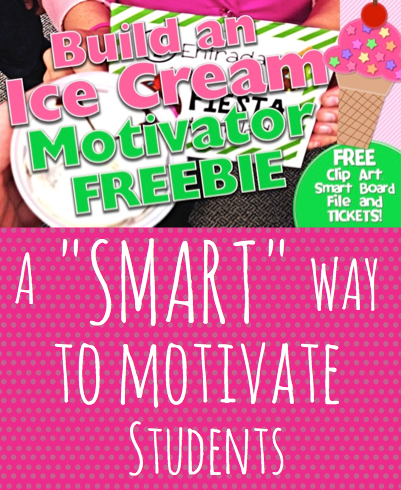My motto is "Have fun, the learning will come!" So, I wanted to share with you a fun way I motivate my students to reach goals as a class. It's called Build-an-Ice Cream Student Motivator, and I created it to use on the Smartboard. This is a great strategy, especially if students need something fresh and new to motivate them (and sweet!). If you don't have a Smartboard, I'll explain how you can adapt the idea.
Basically, once all students have reached a certain goal of five objective (whatever you decide - math facts, reading log, behavior, etc.), they get to have an ice cream celebration! What's more fun than that??
To explain it to you, I've made a YouTube video that shows exactly how it works. Just click here or on the image below.
After watching the video, be sure to pick up all your freebie items at my TpT store! They include:
SMART Board Build-an-Ice Cream File
Ice Cream Party Tickets in English and Spanish
And Ice Cream Clip Art for you to use whenever and however!
If you don't have a Smartboard, I have a solution for you. If you've read Laura's Book Mastering Facts Multiplication and Division, this activity can go right along with her ice cream celebration for learning math facts. So if you don't have an interactive whiteboard in your classroom, you can use a combination of my system and the one that Laura shares in her book. Hope you enjoy using this with your students! Thanks so much!
Tabitha Carro
Tabitha Carro is the creator
of the Flapjack Educational Resources blog where she loves to share ways to
make learning fun. She started her teaching career in the kindergarten classroom and is currently teaching in SC as a Spanish partial-immersion math and science 4th grade teacher. Tabitha enjoys creating videos for
teachers; follow her on YouTube to be sure you don't miss a single one!






















